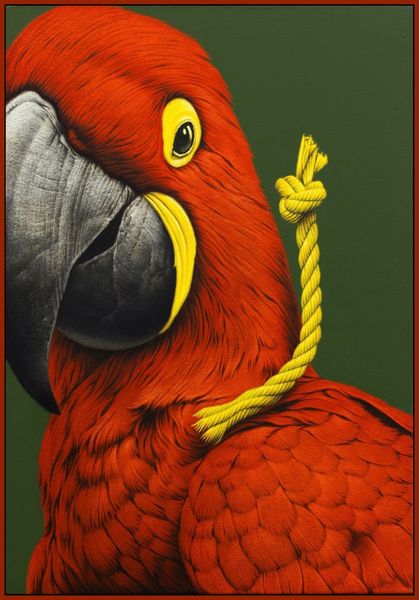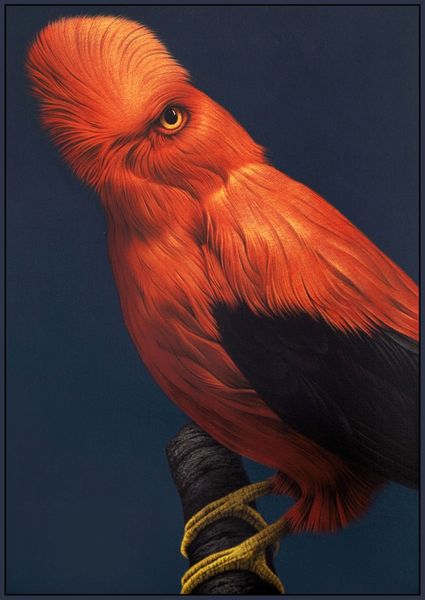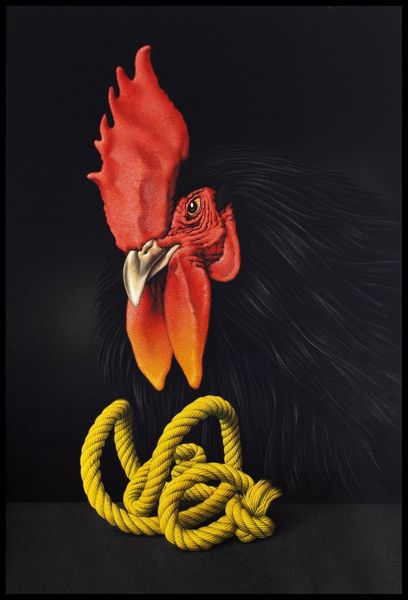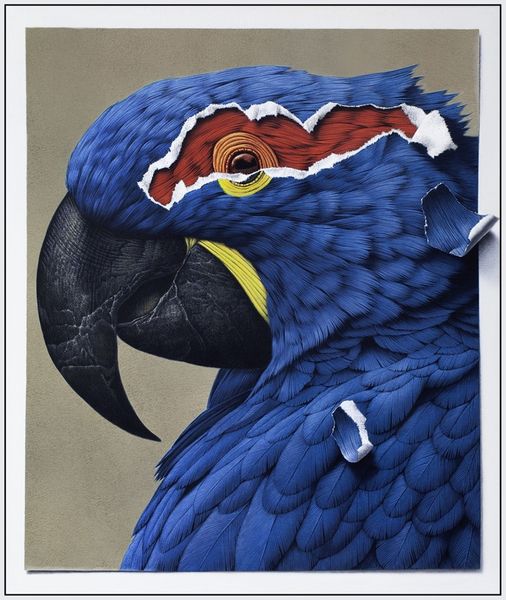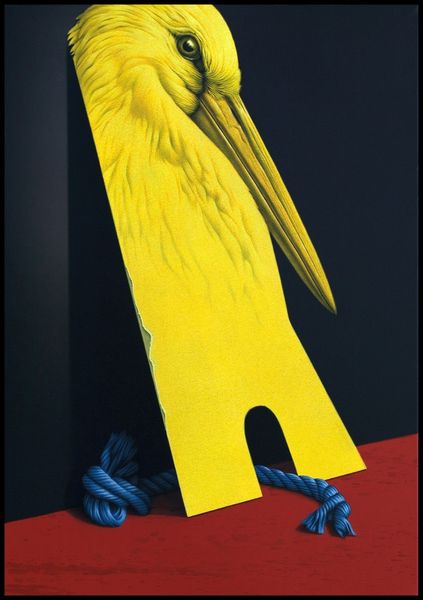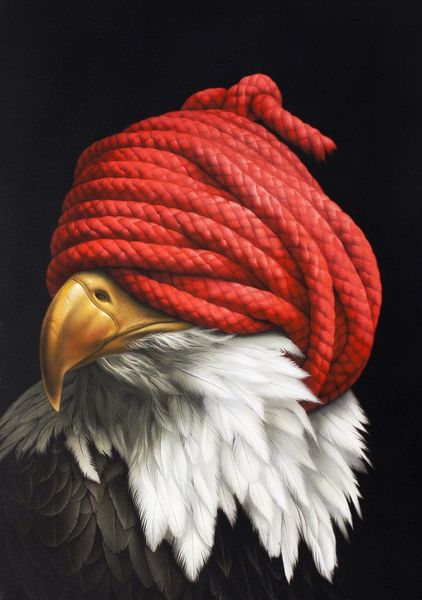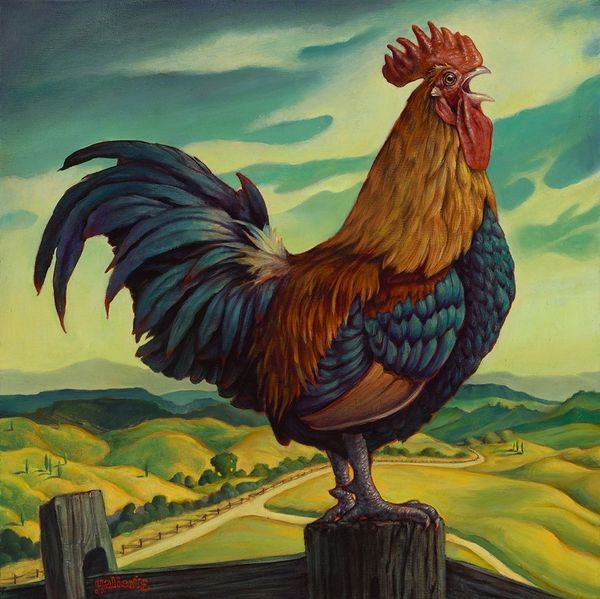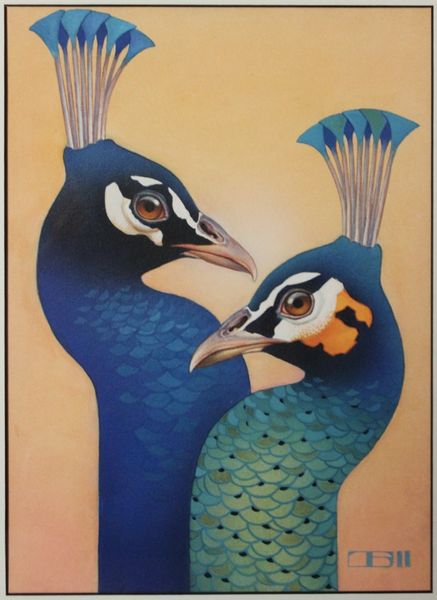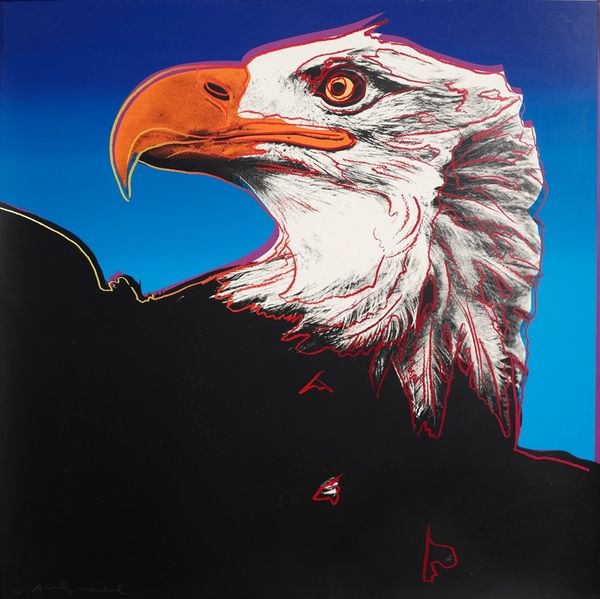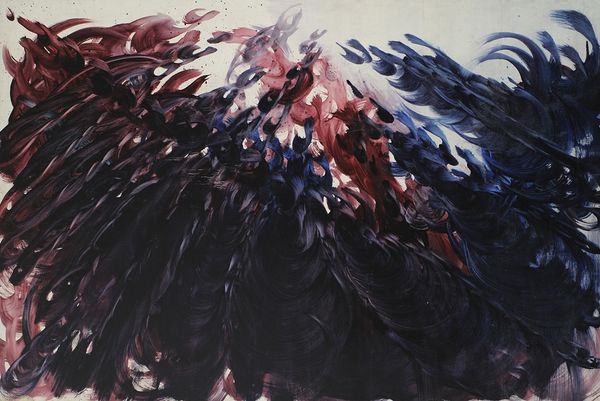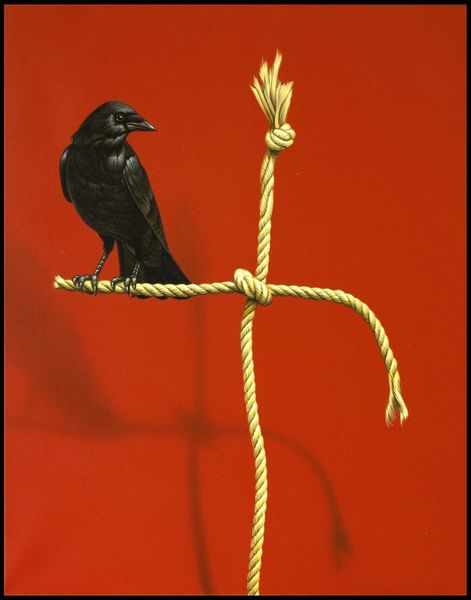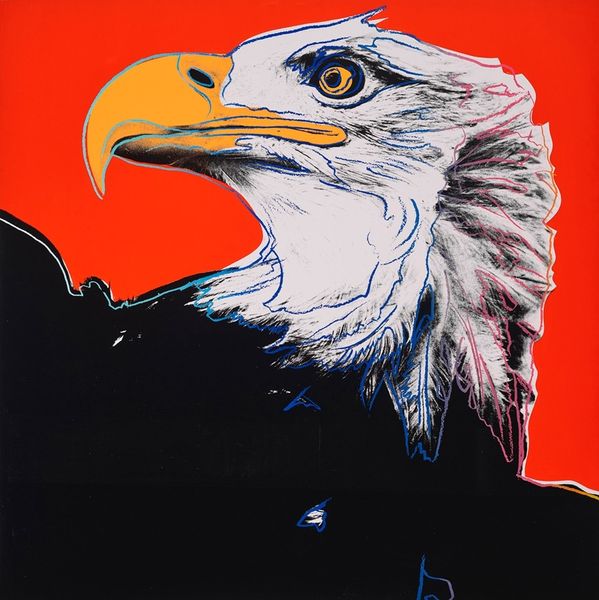
painting, oil-paint
portrait
painting
oil-paint
animal portrait
portrait art
realism
Copyright: Modern Artists: Artvee
Editor: Here we have Eckart Hahn's "Angry Birds," painted in oil in 2020. I'm immediately struck by the almost overwhelming density of the composition – all these red birds packed together. What is your interpretation of this painting from a formalist point of view? Curator: Precisely! Notice how Hahn employs a stark contrast between the vibrant red plumage and the piercing black around the eyes. This juxtaposition amplifies the birds’ perceived intensity. Furthermore, the repetition of the beaks, precisely aligned along a vertical axis, creates a visual rhythm. Does that symmetry strike you? Editor: Yes, I hadn't fully appreciated how deliberately the artist arranged the beaks; it almost feels like an abstract pattern at second glance. But why 'Angry Birds?' They look rather composed to me! Curator: It's fascinating, isn’t it? The title, of course, affects our reading of the composition. Semiotically, one could argue the redness signifies aggression, further emphasizing the "angry" descriptor. But more important is how Hahn is less invested in reflecting inner emotional states, and more with how he organizes form, shape, color, and composition. Do you follow? Editor: I think so. So, the "anger" isn't really about the birds’ emotions, but more about how the artist uses bold colors and tight composition to create a feeling of tension, using that semiotic play between title, color, and spatial arrangement. Curator: Precisely! He manipulates pictorial space and material qualities to produce an effect. We’re primarily concerned with how form conveys meaning here, not with an accurate depiction of inner emotional life. Editor: This gives me a completely new lens for understanding how much intention is in the image. Thanks for elaborating on how formal structure communicates meaning. Curator: My pleasure. Now you see it is about structural relations, and internal language of the work of art, instead of pure description.
Comments
No comments
Be the first to comment and join the conversation on the ultimate creative platform.
